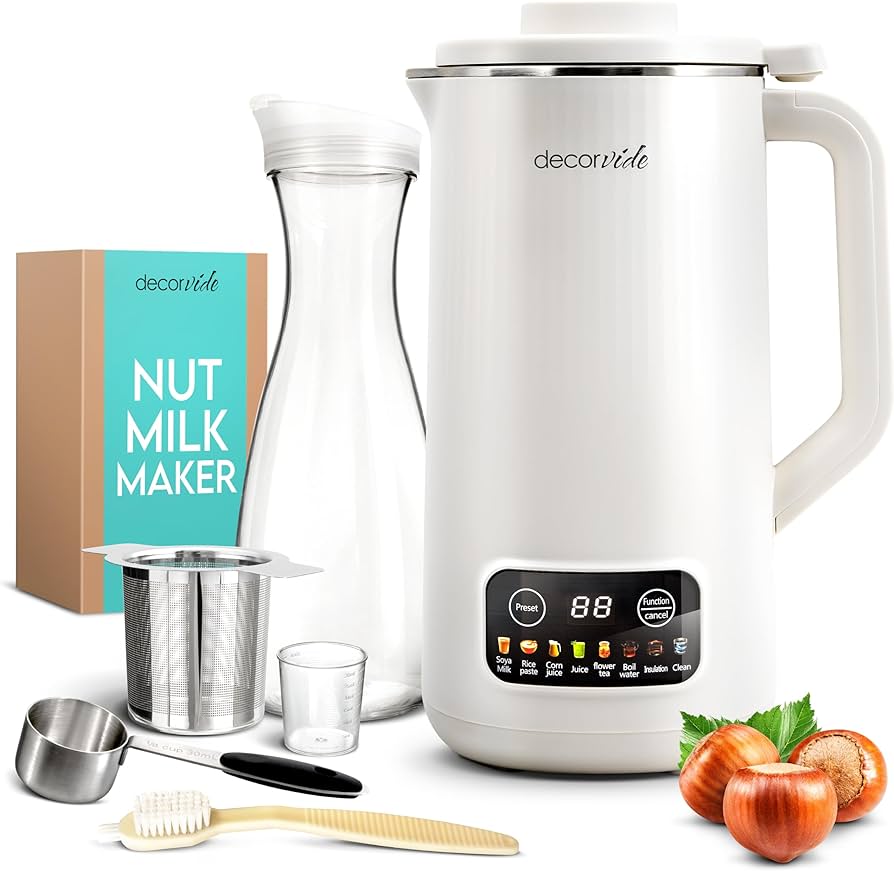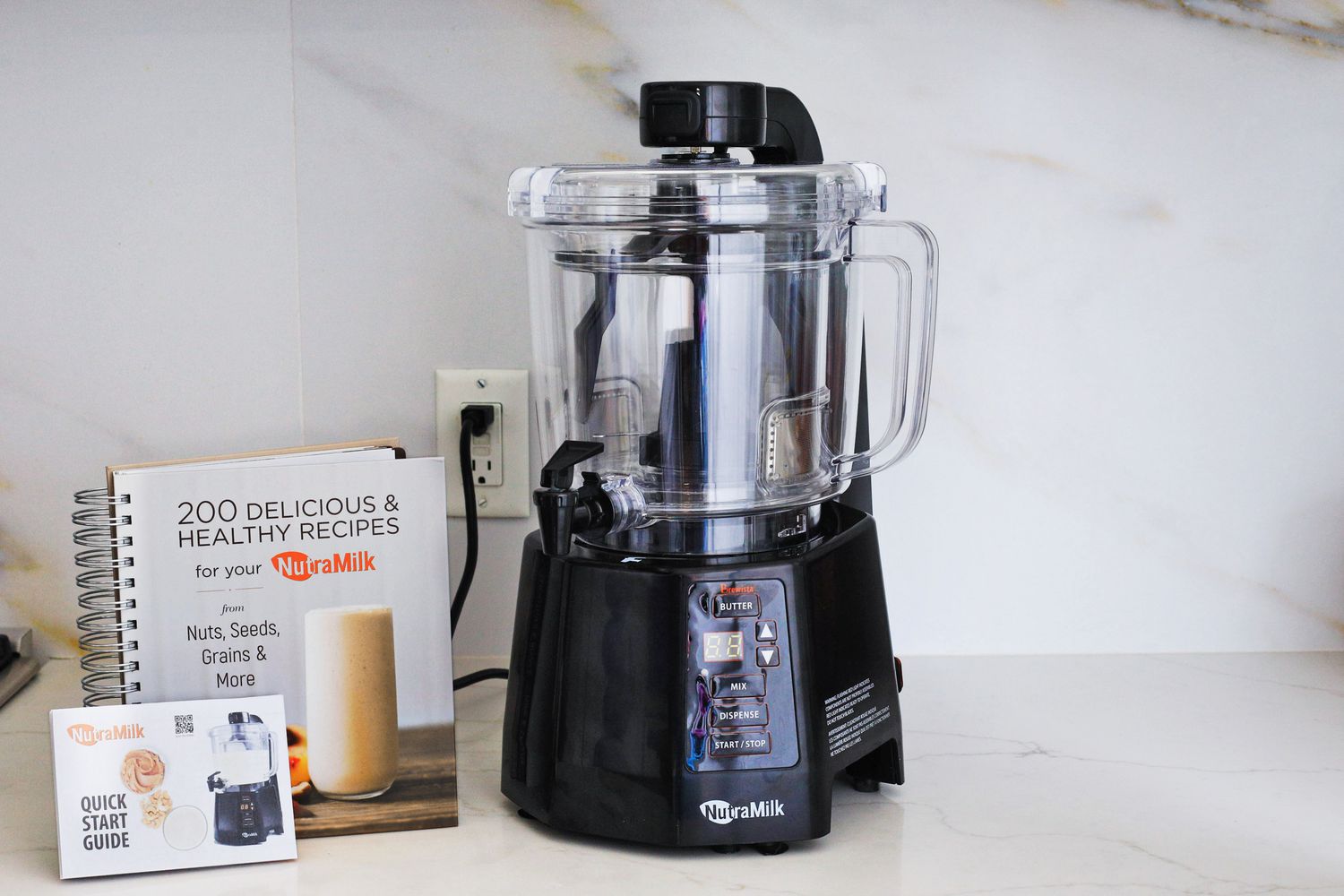



When it comes to creating fresh, homemade soy milk, two appliances stand out as contenders: soy milk makers and blenders. While both can produce soy milk, they differ in their functionalities, features, and overall approach to the soy milk-making process.
This comprehensive guide will delve into the world of soy milk makers and blenders, providing you with the knowledge and insights to make an informed decision and select the perfect appliance for your needs.
I. Introduction to Soy Milk Makers and Blenders
A. Soy Milk Makers: Specialized Appliances for Effortless Soy Milk Production
Soy milk makers are specialized appliances designed specifically for creating soy milk from soybeans and water. They typically feature integrated heating elements, blending mechanisms, and filtration systems that automate the soy milk-making process, making it convenient and hands-off.
1. Automated Process: Soy milk makers streamline the soy milk-making process, requiring minimal user intervention. Simply add soybeans and water, select the desired program, and let the machine do the rest.
2. Specialized Features: Soy milk makers are equipped with features tailored for soy milk production, such as heating elements to cook soybeans and filtration systems to remove soy pulp.
3. Consistent Results: Soy milk makers produce consistent and high-quality soy milk with minimal effort, thanks to their automated process and specialized features.
B. Blenders: Versatile Kitchen Tools with a Wide Range of Applications
Blenders are versatile kitchen tools that excel at blending, crushing, and puréeing a variety of ingredients. While they can be used to make soy milk, they don’t offer the same level of automation or specialized features as soy milk makers.
1. Multifunctional: Blenders can handle a wide range of tasks beyond soy milk making, including creating smoothies, soups, sauces, and more.
2. Manual Operation: Blenders require more hands-on effort and manual adjustments compared to soy milk makers.
3. Varying Results: The texture and quality of soy milk made with a blender may vary depending on blending technique and strainer used.
II. Key Differences Between Soy Milk Makers and Blenders
A. Functionalities and Features:
**Soy Milk Makers:**
* Dedicated soy milk-making programs
* Integrated heating elements for cooking soybeans
* Built-in filtration systems for removing soy pulp
* Often offer preset programs for other plant-based milks
**Blenders:**
* Primarily designed for blending and puréeing
* Some models may have heating capabilities
* Require manual straining to remove soy pulp
* Versatile for a wider range of tasks
B. Ease of Use and Convenience:
**Soy Milk Makers:**
* Generally more straightforward and convenient for soy milk production
* Automated process requires minimal user intervention
* Set-and-forget operation
**Blenders:**
* May require more hands-on effort and manual adjustments
* User needs to monitor the blending and heating process
* Additional steps involved in straining soy pulp
C. Texture and Quality of Soy Milk:
**Soy Milk Makers:**
* Typically produce smoother, creamier soy milk due to specialized heating and filtration mechanisms
* Consistent results with minimal effort
**Blenders:**
* Soy milk texture may vary depending on blending technique and strainer used
* More room for user error and potential inconsistencies
D. Versatility and Additional Functions:
**Soy Milk Makers:**
* Primarily focused on soy milk production
* Some models may offer additional functions like nut milk capabilities or self-cleaning features
**Blenders:**
* Extremely versatile for a wide range of tasks, including smoothies, soups, sauces, and more
* Can handle a variety of ingredients and textures

III. Choosing the Right Appliance for Your Needs
A. Consider Your Soy Milk Consumption Habits:
**Regular Soy Milk Drinkers:**
* A soy milk maker may be a more convenient and efficient choice for regular soy milk consumption
* Offers consistent results and hands-off operation
**Occasional Soy Milk Users:**
* A blender can be a versatile option for occasional soy milk making and other kitchen tasks
* More cost-effective if you don't frequently make soy milk
B. Evaluate Your Kitchen Space and Budget:
**Soy Milk Makers:**
* Typically take up more counter space
* Can be more expensive than blenders
- Blenders:
- Generally more compact and can fit in smaller kitchens
- Offer more value for money if you use them for multiple purposes
C. Prioritize Your Desired Features and Functionality:
**Soy Milk Makers:**
* If you prioritize ease of use, consistent results, and specialized soy milk-making features, a soy milk maker is a good choice
**Blenders:**
* If you value versatility, multiple functions, and a wider range of applications, a blender may be more suitable
IV. Additional Tips for Making Soy Milk
A. Choose High-Quality Soybeans:
* Opt for non-GMO, organic soybeans for optimal flavor and nutrition
* Fresh soybeans will yield better results, with a shorter shelf life than dried soybeans. If using dried soybeans, soak them properly to soften them before using.
B. Adjust the Water-to-Soybean Ratio:
* Experiment with different water-to-soybean ratios to find your preferred consistency. A higher water-to-soybean ratio will result in a thinner, lighter soy milk, while a lower ratio will yield a thicker and creamier milk.
C. Sweeten to Taste:
* Soy milk can be enjoyed plain or sweetened to taste. You can use natural sweeteners like dates, maple syrup, or honey.
D. Store Properly:
* Homemade soy milk can be stored in an airtight container in the refrigerator for up to 3-4 days.
VI. Popular Soy Milk Maker Options:
A. SoyaJoy G5 Soy Milk Maker: This versatile option boasts a 1.5-liter capacity, multiple preset programs for various milk varieties (soy milk, almond milk, oat milk), and adjustable settings for temperature and sweetness. It features a user-friendly control panel and a sleek design. While it doesn’t have a self-cleaning function, its parts are easily disassembled for thorough cleaning.
B. ChefWave Milkmade Non-Dairy Milk Maker: This user-friendly machine offers a 1.8-liter capacity and six preset milk-making programs. It features digital touch control for easy operation and a sleek, modern design. Unlike the SoyaJoy, this model boasts a self-cleaning function, eliminating the hassle of manual cleaning. It also has a start-delay feature, allowing you to schedule your soy milk making process for later convenience.
C. Nutr Nut Milk Maker: This compact and portable option is ideal for small kitchens or those with limited storage space. It has a 0.7-liter capacity and a simple design with one-touch operation. While it doesn’t have any preset programs or fancy features, it’s perfect for basic soy milk making. Its small size and lightweight design also make it a great choice for travel or on-the-go use.
VII. Popular Blender Options for Soy Milk Making:
A. Vitamix Professional Series 750 Blender: This high-performance blender is a powerhouse for all your blending needs, including soy milk. Its powerful motor and durable blades can easily pulverize soybeans, resulting in smooth and creamy soy milk. While not specifically designed for soy milk, its versatility and ability to handle tough ingredients make it a strong contender.
B. NutriBullet Pro 900 High-Power Blender: This personal blender is a more compact and affordable option for occasional soy milk making. Its single-serve cups and powerful motor are well-suited for smaller batches. However, achieving a very smooth texture might require multiple blending cycles compared to a high-performance blender.
C. KitchenAid Diamond Blender KSB1575ER: This feature-rich blender offers a variety of functions and settings, making it suitable for various tasks, including soy milk creation. It has a powerful motor, pre-programmed settings for different blending applications, and a self-cleaning function for added convenience.
V. Conclusion
The choice between a soy milk maker and a blender for your soy milk needs ultimately depends on your individual priorities and preferences. If you prioritize convenience, consistent results, and ease of use, a soy milk maker is the way to go. However, if you value versatility, a wider range of applications, and a more cost-effective option, a blender can be a suitable choice, especially for occasional soy milk making.
By considering the factors outlined in this guide, you can make an informed decision and select the perfect appliance to embark on your journey of creating delicious and healthy homemade soy milk.